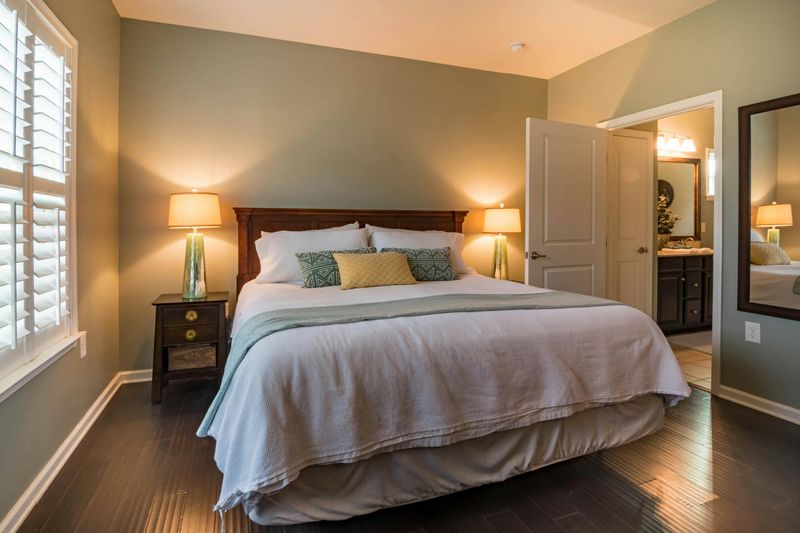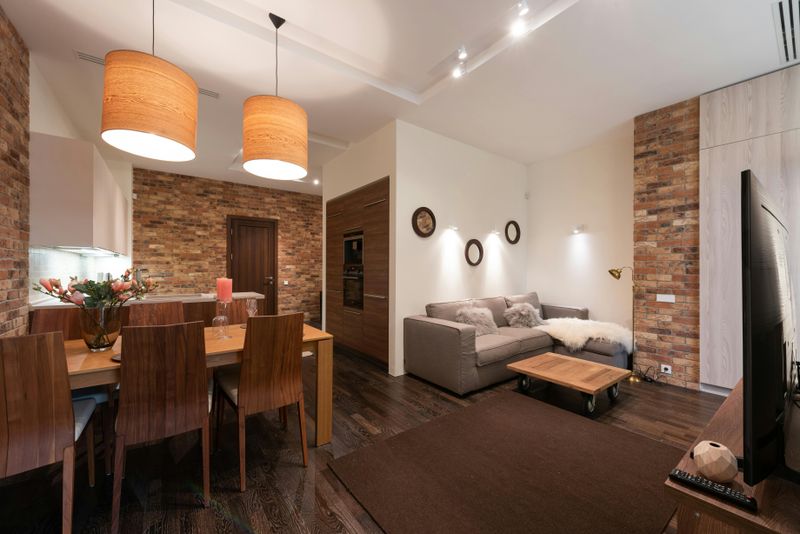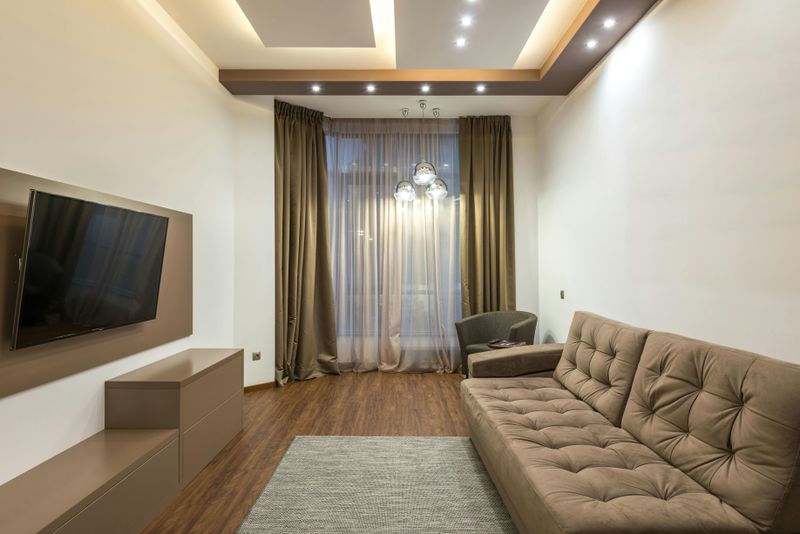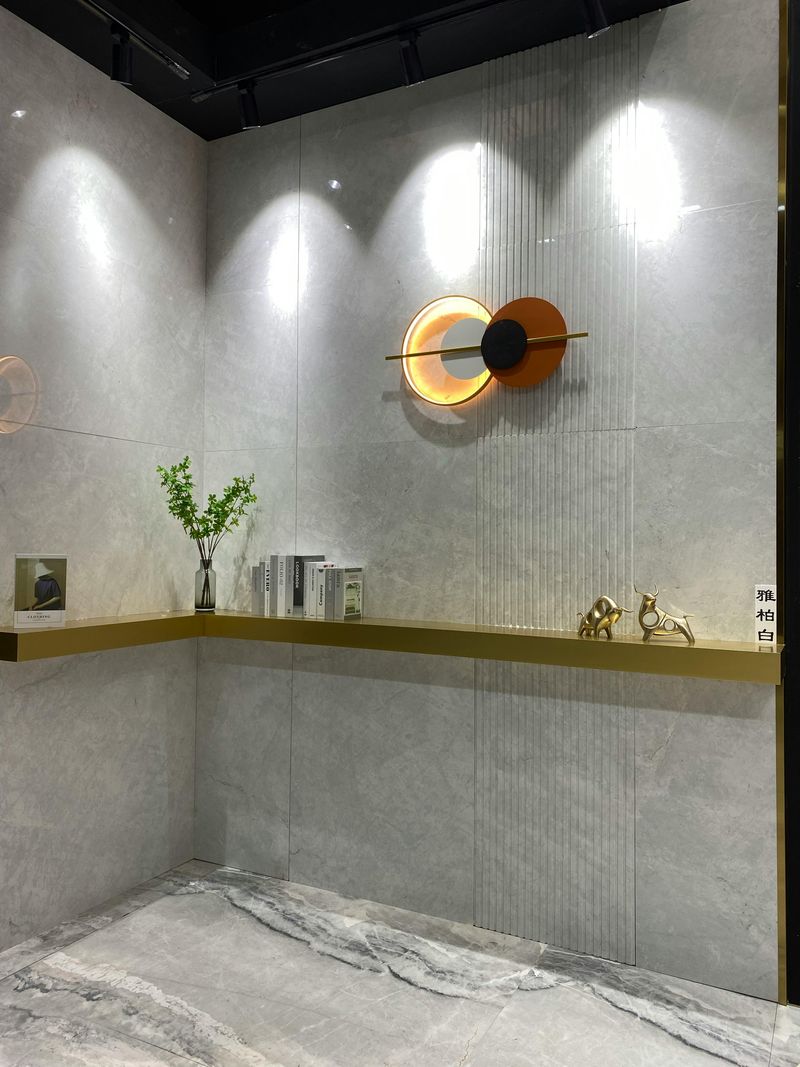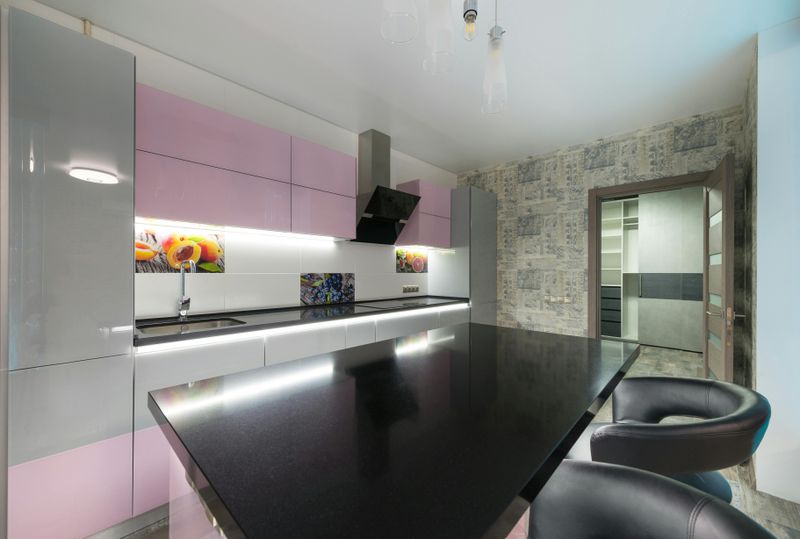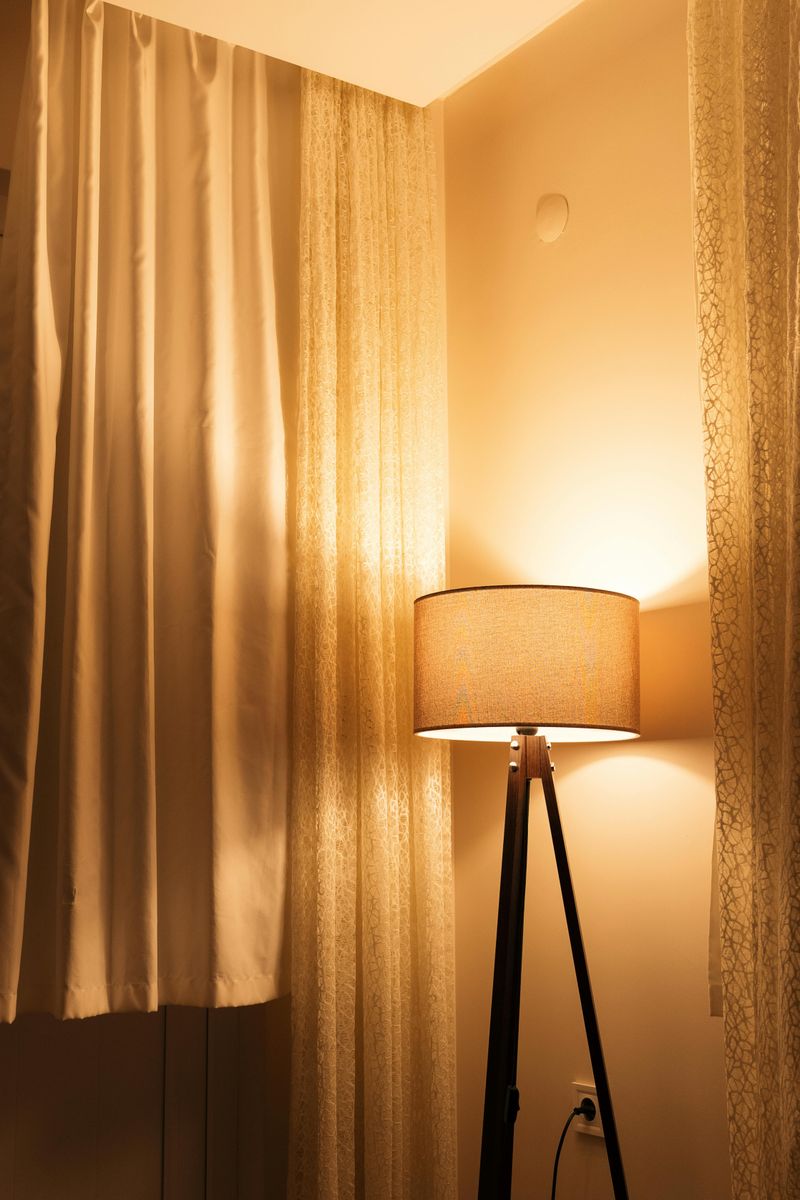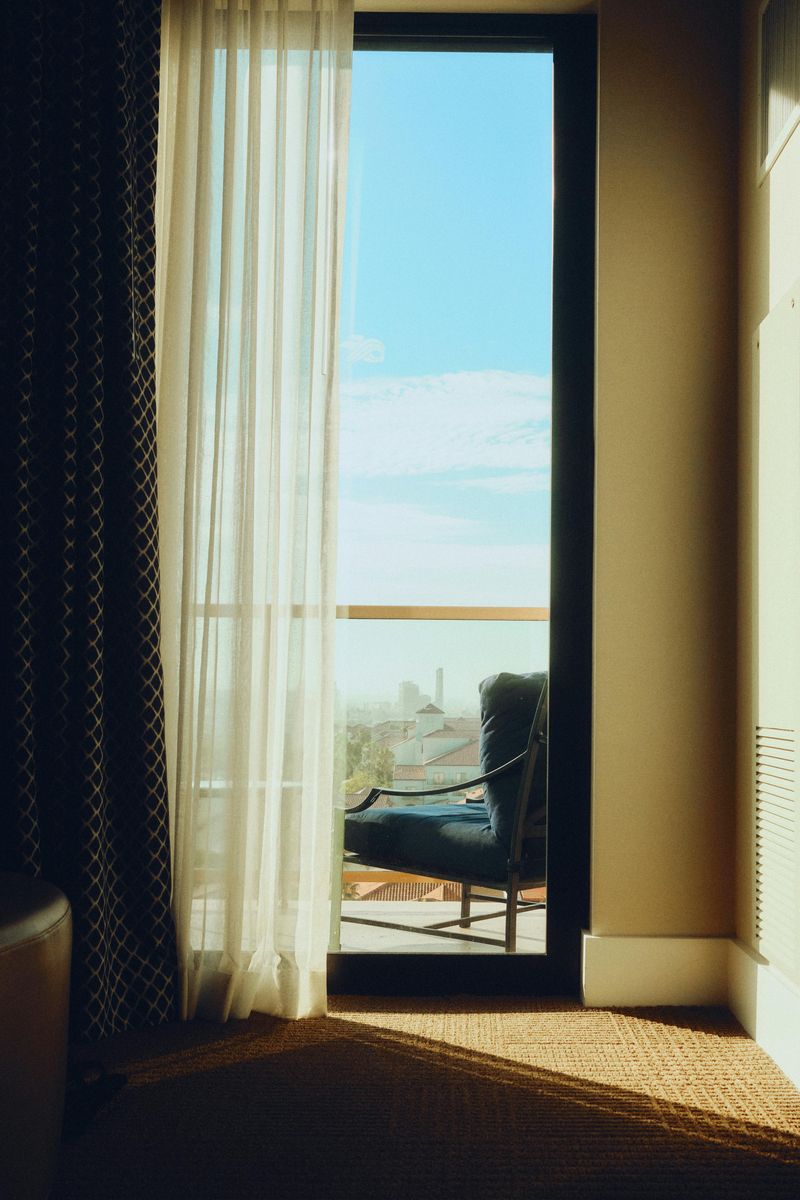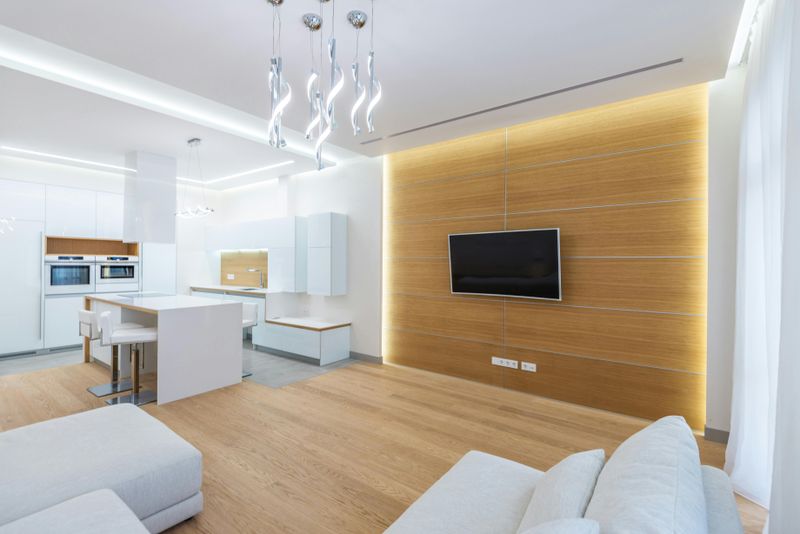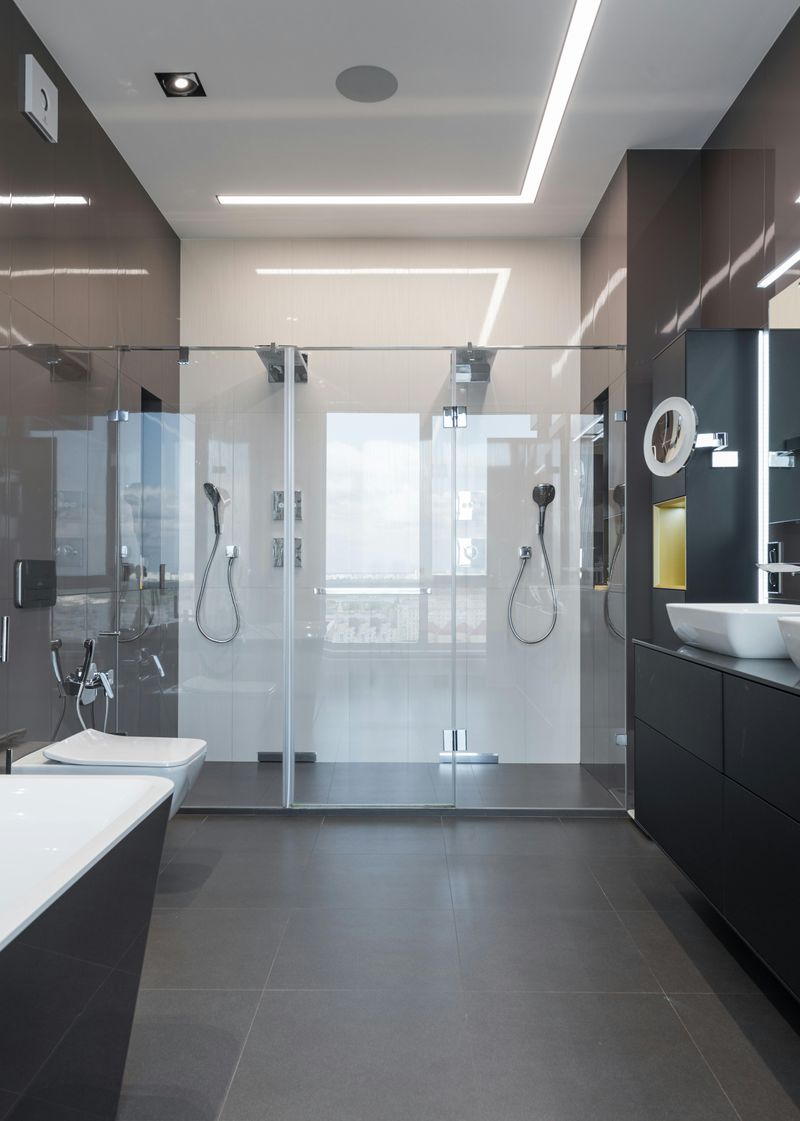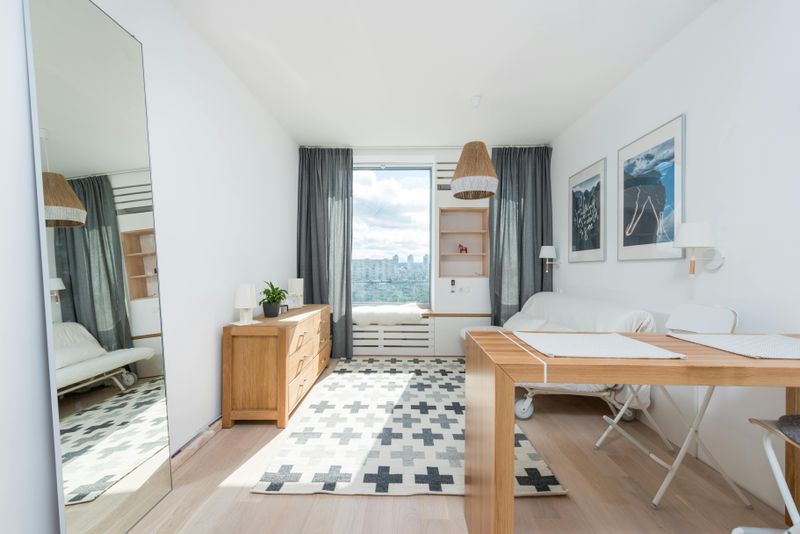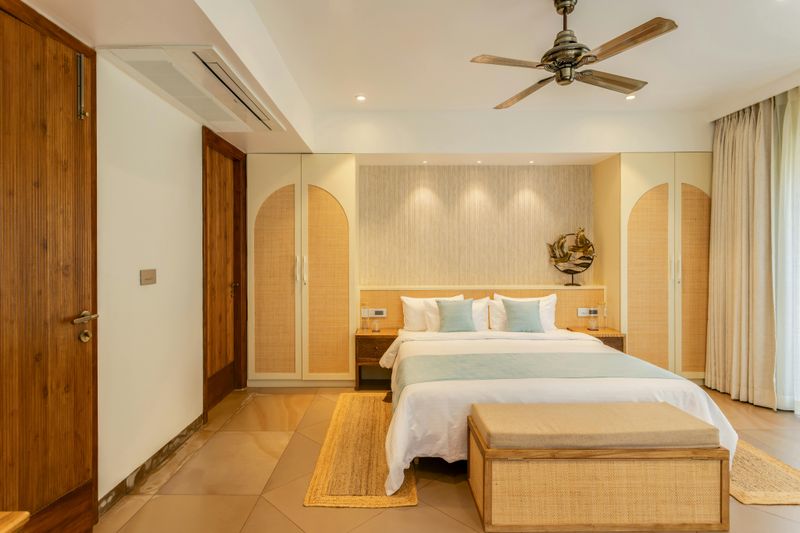Feeling cramped in your home? You don’t need to knock down walls to create a more spacious feel. Lighting plays a huge role in how we perceive space, and with a few smart tricks, you can transform even the tiniest rooms into airy, open areas. The right lighting setup can eliminate shadows, highlight architectural features, and create an illusion of depth that makes any space feel more generous.
1. Strategic Mirror Placement with Lighting
Mirrors work like magic when paired with good lighting. Position a mirror across from a window or light fixture to bounce illumination throughout your space, instantly doubling the perceived depth of your room.
The reflected light creates a brighter atmosphere while the mirror itself adds a visual portal that tricks your brain into seeing more space. For maximum impact, try a floor-to-ceiling mirror near your main light source.
Apartment dwellers take note – this trick works wonders in narrow hallways and small bedrooms where every inch counts!
2. Layer Your Lighting Sources
Banish those gloomy corners by incorporating multiple light sources at different heights. Ambient overhead lighting provides general illumination, while task lighting focuses on specific areas, and accent lighting adds dimension.
When light comes from various sources, shadows disappear and the room breathes with newfound spaciousness. Try combining ceiling fixtures, wall sconces, and table lamps for a well-balanced lighting scheme.
The layered approach eliminates harsh shadows that can make spaces feel confined, creating a more dynamic environment that naturally feels larger to the eye.
3. Recessed Lighting for Clean Ceiling Lines
Bulky light fixtures can visually clutter your ceiling and make it appear lower than it actually is. Recessed lighting solves this problem by sitting flush with the ceiling, creating clean, uninterrupted lines overhead.
These unobtrusive fixtures spread light evenly across the room without drawing attention to themselves. The result? Your ceiling appears higher and your space feels more open.
For small rooms, arrange recessed lights in a grid pattern about 30 inches from walls to wash them with light, making the boundaries of your space feel less confining.
4. Light-Colored Lampshades for Diffused Brightness
Dark lampshades absorb light, creating concentrated pools of illumination that can make a room feel choppy and small. Light-colored or translucent lampshades allow more light to pass through, creating a softer, more diffused glow that spreads throughout the space.
White, cream, or light beige shades work wonders in tight quarters. The gentle diffusion eliminates harsh contrasts between light and dark areas that can visually shrink your room.
For an extra space-enhancing effect, choose drum-shaped shades rather than tapered ones – their more generous proportions distribute light more evenly.
5. Vertical Surface Illumination
Most rooms have lighting that focuses downward, leaving walls in shadow. This creates a cave-like feeling that shrinks your space. Breaking this pattern by deliberately lighting vertical surfaces dramatically opens up a room.
Wall sconces, picture lights, or even strategically placed table lamps can wash your walls with light. When walls are brightly lit, the boundaries of your room appear to recede, creating an expansive feeling.
Try positioning floor lamps that direct light upward in corners to eliminate shadows where walls meet, instantly making your room feel larger and more welcoming.
6. Under-Cabinet Lighting for Kitchen Expansion
Kitchen cabinets can cast shadows on countertops, making your cooking space feel cramped and dark. Under-cabinet lighting eliminates these shadows, visually pushing back the walls and creating the illusion of more counter space.
These hidden light strips not only make food prep easier but also add a layer of illumination that makes the entire kitchen feel more spacious. The extra light bounces off countertop surfaces, especially if they’re light-colored or reflective.
As a bonus, this lighting technique creates a floating effect for your upper cabinets, adding architectural interest while making ceilings appear higher!
7. Corner Floor Lamps for Depth Creation
Dark corners shrink rooms visually, making them feel boxy and confined. A tall floor lamp tucked into a corner illuminates these forgotten spaces, instantly adding perceived square footage to your room.
Look for torchiere-style lamps that direct light upward or arc lamps that extend into the room. The upward light path draws the eye toward the ceiling, creating a sense of height, while the illuminated corner expands the room’s visual boundaries.
For maximum impact, place these lamps in the farthest corners from entry points so they pull your gaze across the entire space.
8. Sheer Curtains for Natural Light Maximization
Heavy drapes block precious natural light and visually shrink your windows. Sheer curtains filter sunlight without blocking it, bathing your room in soft, diffused illumination that makes the space feel airy and expansive.
The translucent fabric creates a dreamy quality as light passes through, softening harsh sunlight while maintaining a connection to the outdoors. This indoor-outdoor connection psychologically expands your space beyond its physical walls.
For rooms with limited square footage, hang curtain rods wider than your windows and mount them close to the ceiling – this simple trick makes windows appear larger while maximizing natural light flow.
9. LED Strip Lights for Hidden Dimension
LED strip lights installed in unexpected places create depth and dimension without taking up any physical space. Tucked under beds, sofas, or along the perimeter of the ceiling, these thin light strips create a floating effect that visually separates surfaces from walls.
The gentle glow from these hidden sources eliminates the harsh meeting point between walls and floors or ceilings. This lighting technique is particularly effective in basement rooms or spaces with low ceilings.
Color-changing LED strips offer versatility – cool whites make spaces feel larger and more contemporary, while warm tones create a cozier yet still spacious atmosphere.
10. Clear or Glass Light Fixtures for Visual Lightness
Heavy, opaque light fixtures create visual weight that can make low ceilings feel even lower. Clear glass or acrylic fixtures allow light to pass through in all directions while maintaining an airy, weightless presence in your space.
Pendant lights with transparent globes, glass chandeliers, or fixtures with exposed bulbs surrounded by clear elements work particularly well. Their transparency allows your eye to travel through them rather than stopping at a solid object.
The unobstructed view makes ceilings appear higher and rooms feel less cluttered, even when the fixture itself is substantial in size.
11. High-Gloss Paint Finishes for Light Reflection
Matte paint absorbs light, while glossy finishes bounce it around the room like additional windows. A high-gloss ceiling paint reflects both natural and artificial light downward, creating the illusion of higher ceilings and more space.
You don’t need to go full-gloss on all surfaces – even a semi-gloss trim or a single accent wall with a higher sheen can dramatically increase light reflection. The subtle sheen creates movement as light changes throughout the day, making your space feel dynamic rather than static.
For tiny bathrooms or hallways, high-gloss paint on ceilings works wonders to combat the claustrophobic feeling these spaces often have.
12. Dimmable Lighting for Adaptable Atmospheres
Rooms that serve multiple purposes need flexible lighting that can adapt to different activities. Dimmable fixtures allow you to adjust light levels based on your needs, preventing the harsh, overwhelming brightness that can make small spaces feel clinical and confined.
Lower light levels create intimacy for evening relaxation, while brighter settings work for tasks requiring focus. Modern smart dimmers can even be programmed to change throughout the day, subtly expanding or contracting the perceived space.
For maximum flexibility, ensure your main light sources are dimmable and supplement with accent lighting that can be switched on separately.

